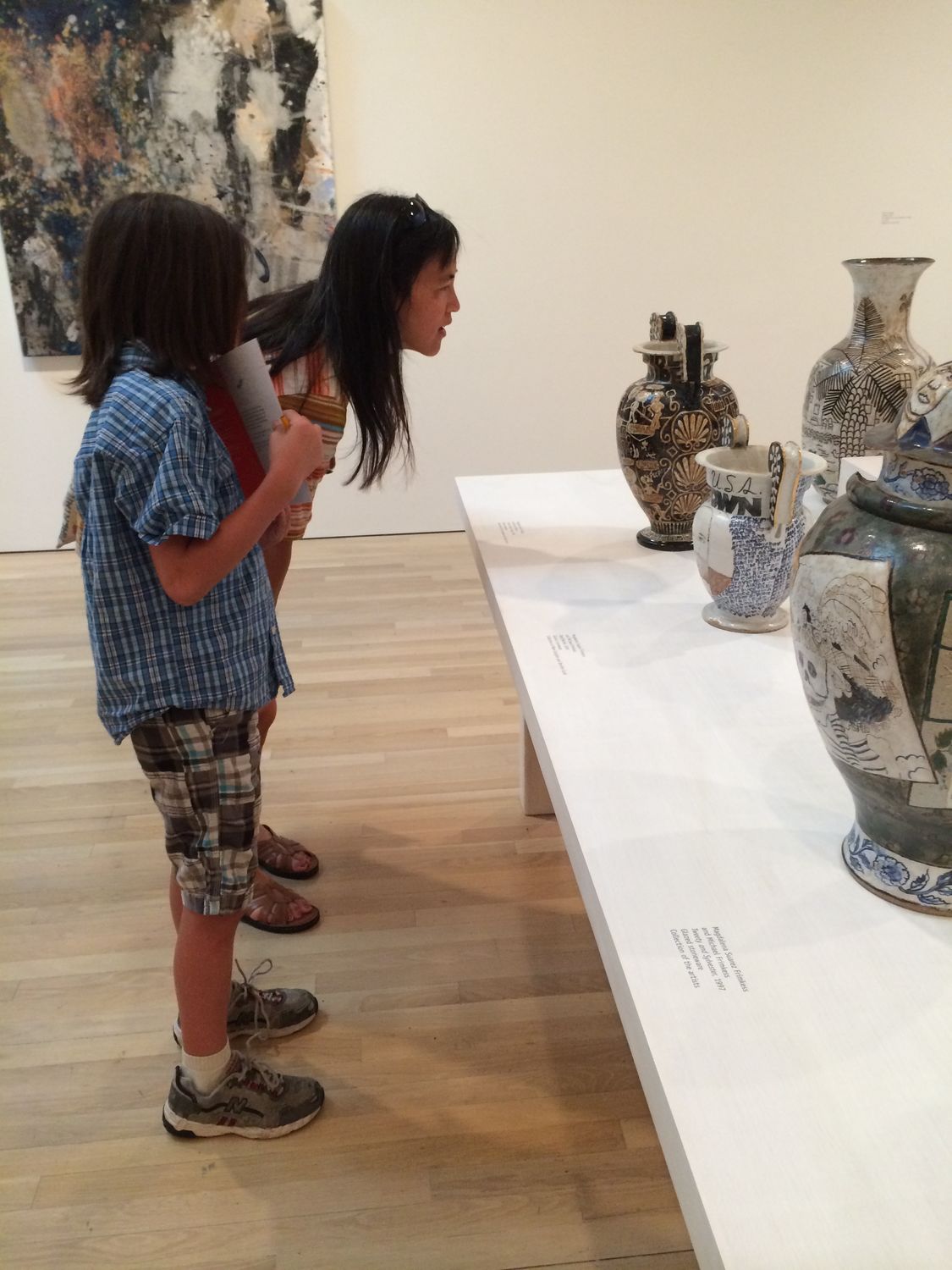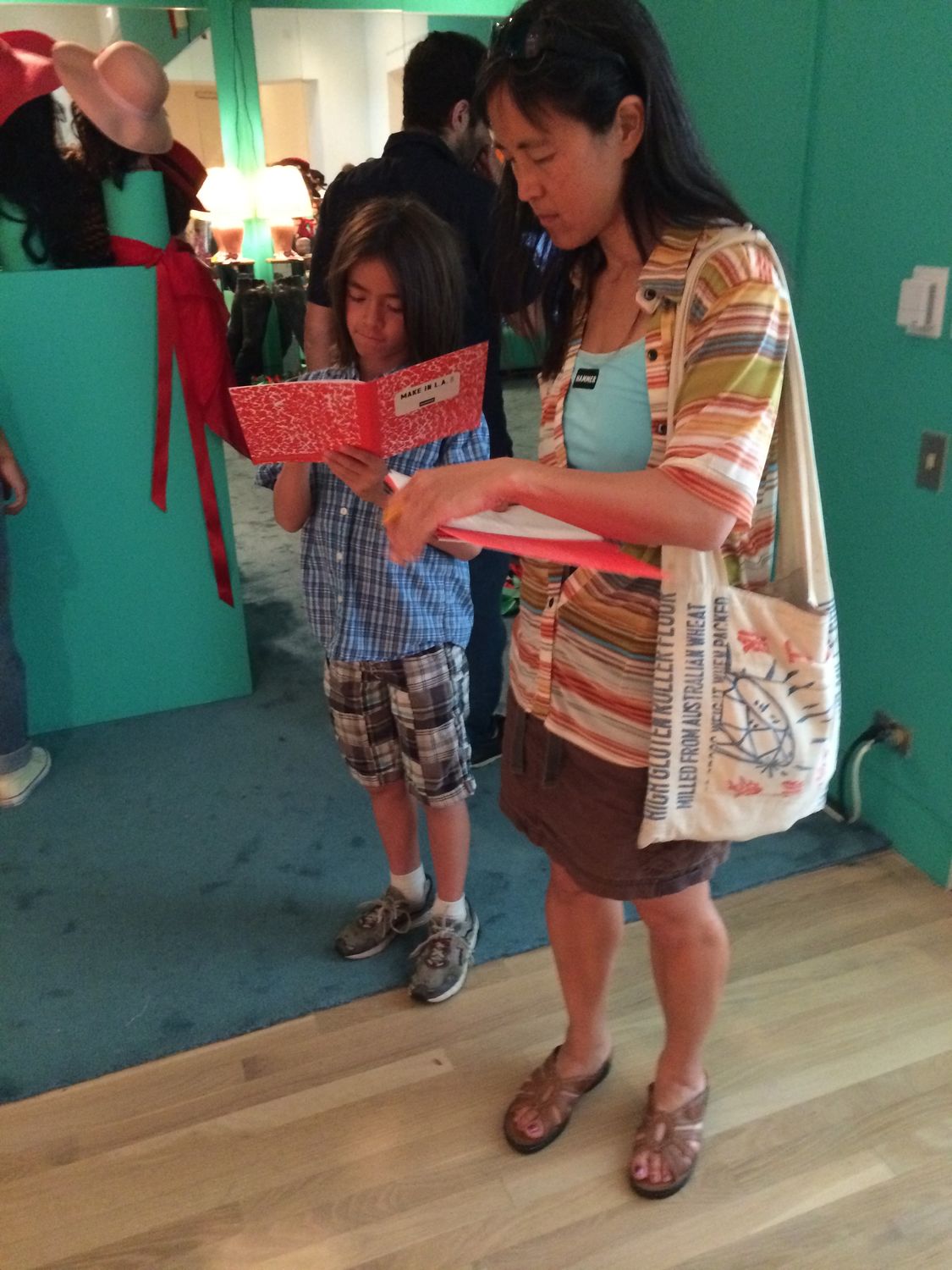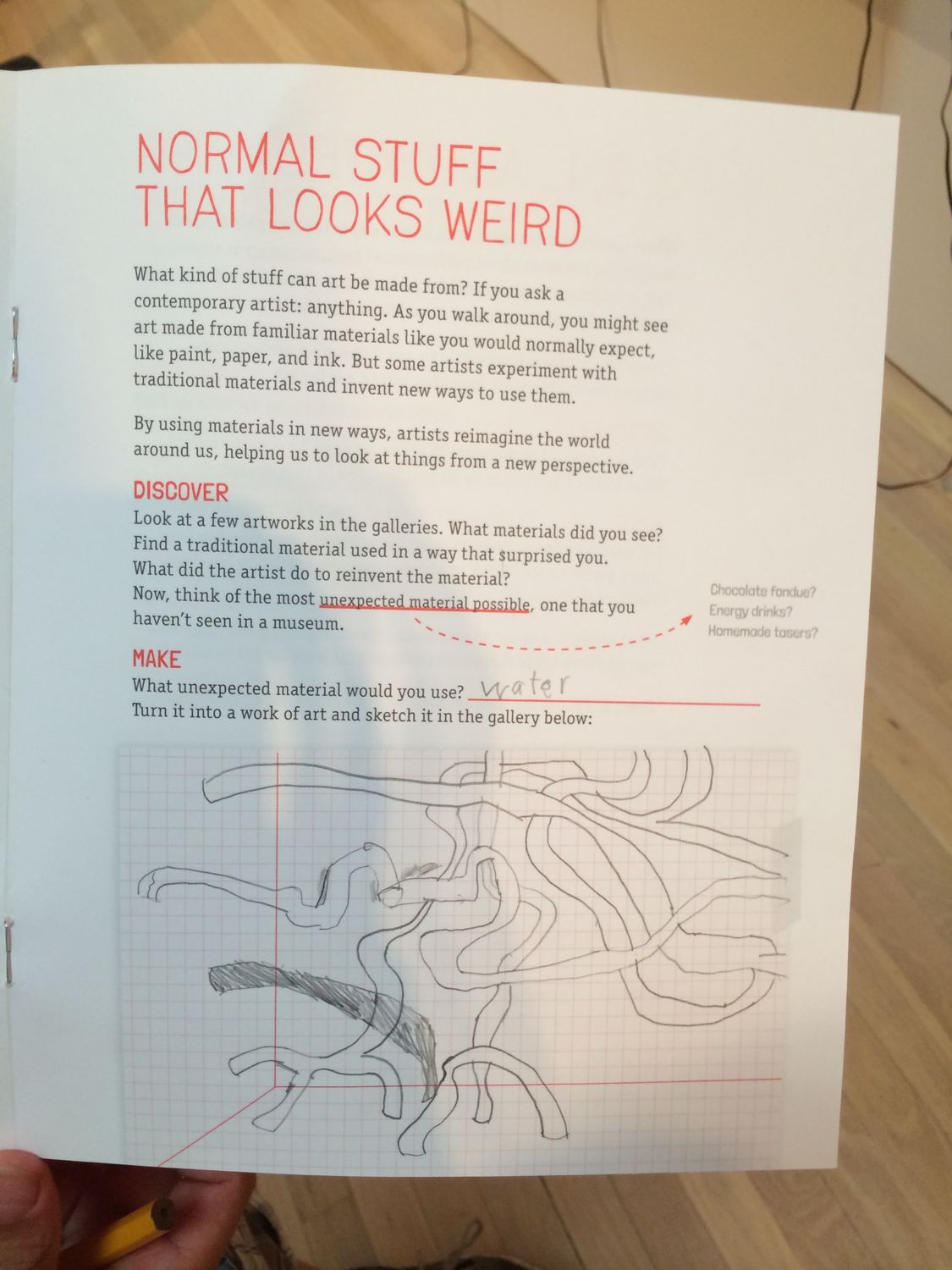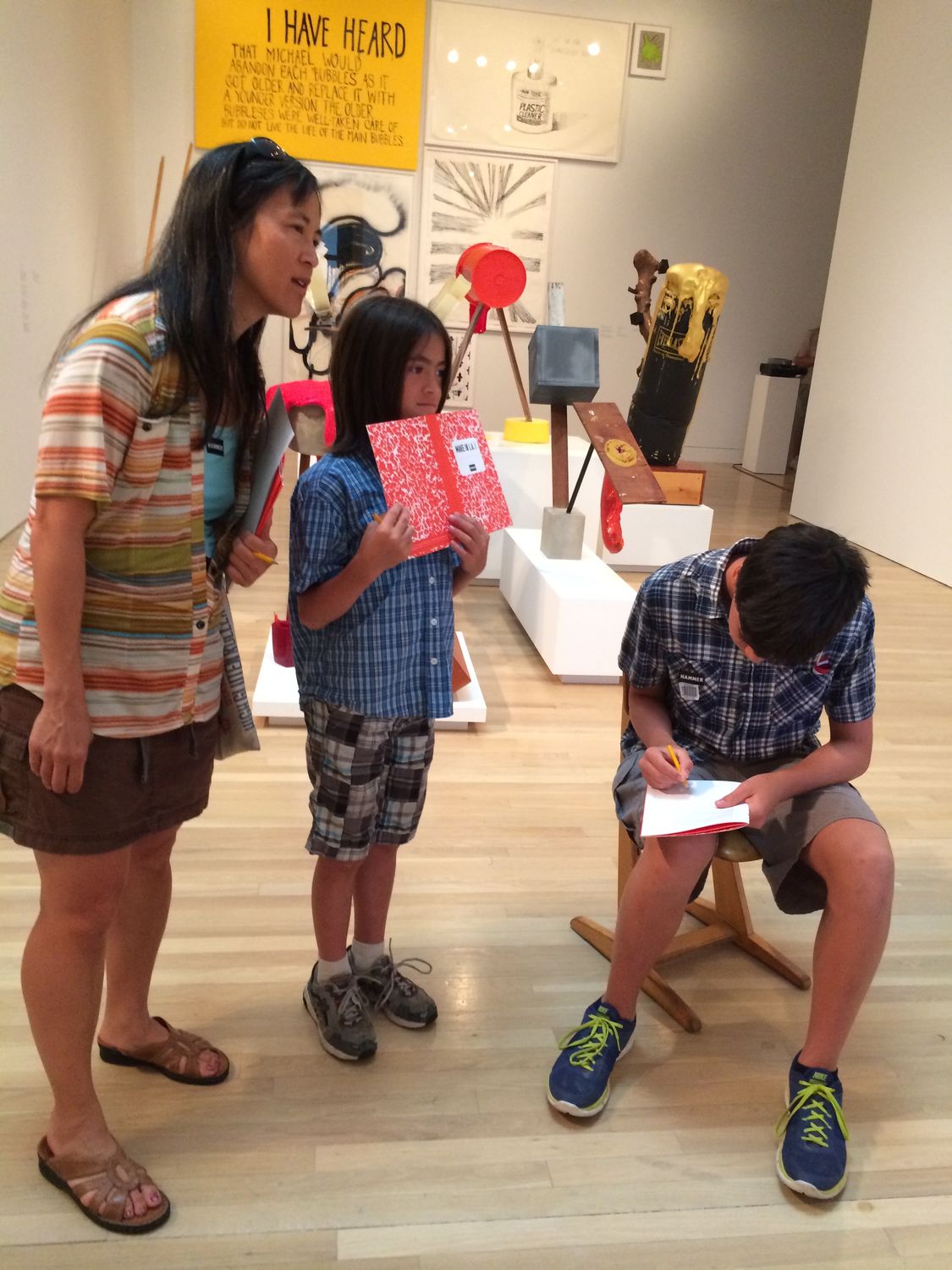
Make in L.A.
When we set out to make an educational guide for Made in L.A. 2014, we knew we had a challenge ahead of us. With over 100 works by 35 artists and collectives taking over the entire museum (literally), we dared ourselves to make a guide to allow visitors of all ages to engage with the dynamic range of work on view.
We looked at guides from other museums, online games, activity books, and worksheets, and then reminded ourselves of the exhibition: Made in L.A. 2014 is about the incredible artists that are making incredible work throughout the city. We turned to the artists themselves. We thought about how they work, form ideas, and engage with the world. Our answer?
Sketchbooks.
Most artists have sketchbooks to document thoughts, collect inspiration, and experiment with ideas. This is one of the goals the Academic Programs department has for our visitors when they come into the galleries: to think, be inspired, and experiment. So, we created an educational guide in the form of a sketchbook and called it Make in L.A.

Make in L.A. explores themes and ideas that are represented throughout the exhibition, like color, material, family, performance, and why art matters. You can pick and choose which pages and ideas you want to explore, perhaps depending on your mood or where you are in the galleries, or do them all. Just like sketchbooks, it’s a safe place for you to explore your ideas, be inspired, and experiment like an artist.
How are visitors using the guide? I visited our galleries one afternoon to find out.

MeHee and her two sons, Tedrik (15 years old) and Cooper (9 years old), stopped by the museum after a family lunch in the area, picked up copies of Make in L.A., and generously let me tag along during their visit. MeHee hadn’t visited the Hammer in several years, and wanted to bring her sons to play table tennis on Sound piece for the Hammer Museum by Machine Project (2010). After she found them (they’ve been relocated to the corner between AMMO and our entrance on Lindbrook Drive if you’ve also been searching), she brought her sons up to the galleries for a stroll through Made in L.A. 2014.

MeHee, Tedrik, and Cooper started with the first page of the guide, which is an exploration of Los Angeles. The page has empty bubbles you fill in with words, places, food, and anything else that comes to mind when you think of Los Angeles. As native Angelenos, the family had lots of things to say about the city, and their responses revealed their personalities and interests. Astute and perceptive Cooper was quick to write “Disneyland,” but then crossed it off since it wasn’t “technically” in Los Angeles, and Tedrik’s responses exposed himself as a sports aficionado.

Inspired by the different media on view, they turned to the page about material: Normal Stuff that Looks Weird. As a museum that features contemporary art, we exhibit more than just “oil on canvas” in our galleries. It’s no surprise that contemporary artists use unconventional materials in their work (we’ve seen things like gingerbread and fur), but they’re also using everyday materials in new and inventive ways (like painting on bed sheets and sculpting hair).
For this activity, you’re asked to think of a material you normally wouldn’t expect to see in a museum and use it to turn it into a work of art. Cooper’s material of choice was water. Water!? I was curious and observed as he drew a series of intersecting tubes.

“Water is something you don’t use except in a fountain,” Cooper explained, and continued to describe how he would use water, clear pipes, and air pressure to make a streaming river. Contemporary artist, much? I could definitely see artwork like that in our galleries. Made in L.A. 2020?

Look for a Make in L.A. guide the next time you visit the exhibition (note that there’s a limited supply!), and think like an artist as you explore Made in L.A. 2014. You can also print a PDF of the guide from our website here. If you fill out any of the pages, snap a picture and email it to us at academicprograms@hammer.ucla.edu – we’d love to see what you’re making in L.A.




